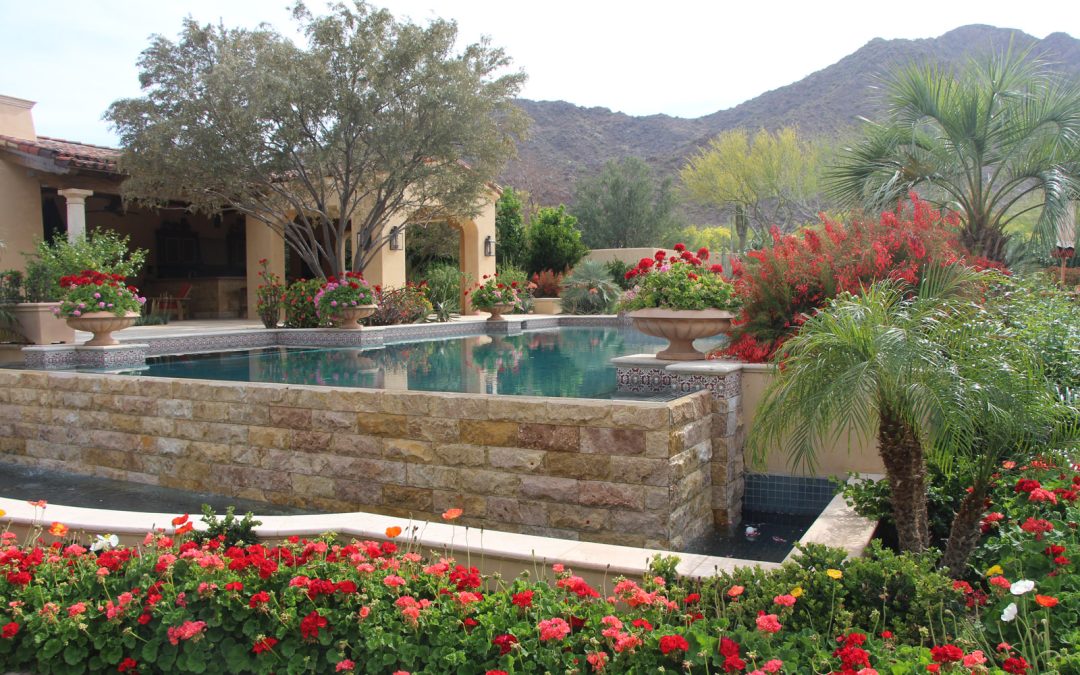Always Iconic
Greg Trutza
Forty five years after launching his own firm, the landscape architect is still creating serene garden havens.
Landscape architect Greg Trutza is having a problem with guests at his Midtown Phoenix home and studio, where he has created a garden dense with shrubs and flowers, cooled by shade trees and laced with winding brick paths. “A garden should be a sanctuary,” Trutza says. “It should be a nurturing habitat.” While he doesn’t mind visitors of the human kind and those from the animal kingdom, such as raccoons, owls and herons, coming to this lush sanctuary, it’s a pair of foxes (yes, foxes) that have recently shown up and are trying his patience. “They’re nocturnal, so they run across my shake-shingle roof in the middle of the night,” he says. “It’s so loud that it wakes me up.”
Despite the vulpine visitors and a few sleepless nights, Trutza continues to be one of Arizona’s most beloved residential landscape architects, marrying hardscape and horticulture to create environments that draw clients outdoors to linger in the garden.
From childhood, he seemed pre-ordained to create gardens. “I grew up in Cleveland,” Trutza explains, “and we lived at the edge of the woods. My father cleared the lot and built the house. We always had stacks of gardening magazines around, and I devoured every page. My parents gave me a plot in the yard to grow flowers and vegetables. I guess this is in my DNA.”
Trutza was a science major at Ohio State University, then, following a childhood dream of living in Australia, moved to Sydney where he found work teaching high school science in the early 1970s. When the University of Sydney opened a horticulture program, he applied and received a master’s degree in the subject. “Living in Australia was amazing,” Trutza recalls. “I met so many people there who became my lifelong friends.”
Eventually, family beckoned, and when his parents and brother relocated to Phoenix, Trutza followed. After working for a now-defunct Scottsdale nursery for a year, he launched his firm, New Directions in Landscape Architecture, in 1979, moving it to his Phoenix home and studio in 1982. Aided in the business by his family, Trutza began designing landscapes and became a registered landscape architect by 1986. “I started designing gardens in Australia,” he explains, “so that seemed like a natural progression.”
In the early 1980s, his work began appearing in Phoenix Home & Garden magazine and other publications, and he participated in many local designers’ showhouses, creating notable garden settings that included a reflecting pool and pavilion for an adobe estate near the Arizona Biltmore and a French-inspired mill pond for an Arcadia home. Design awards and commissions soon followed, creating a steady flow of work that continues today.
With the help of two part-time assistants, Trutza is still hands-on with his clients, many of whom are repeat clients coming to him to expand an existing landscape or create a garden for a new home. He’s developed ongoing relationships with builders and architects, such as Greg Hunt, Cal Christiansen, Mark Candelaria, Mike Higgins and others, who ask him to create landscapes that integrate with the architecture and the clients’ needs. “I’ve done projects in Aspen, Palm Springs, Carmel, San Diego and other places,” Trutza says. “But I’m trying to shrink that radius down a bit these days, and that’s much easier with video walk-throughs and Revit software.” His current projects include several large homes and updates to existing clients’ gardens.
Though no two landscapes are the same, in all projects, Trutza pays equal attention to plant materials and hardscape. “That’s an essential marriage,” he notes. “A strong design gives plants meaning. Plants are ‘artistic’ too, and I’m always experimenting with them.” Another hallmark of Trutza’s landscapes? “The garden should be a haven. In the morning before work, I want clients to sit in their driveway, admiring their landscape, and not wanting to leave.”
In the meantime, Trutza is trying to gently nudge his four-legged interlopers out of his own landscape, using coyote urine and high-tech ultrasonic devices rigged to his rooftop. It might be in vain. Though he says this in general about his work, the foxes might be taking this too literally: “Once the soul has been touched by a garden, you get it into your blood. The positivity is joyful.”

